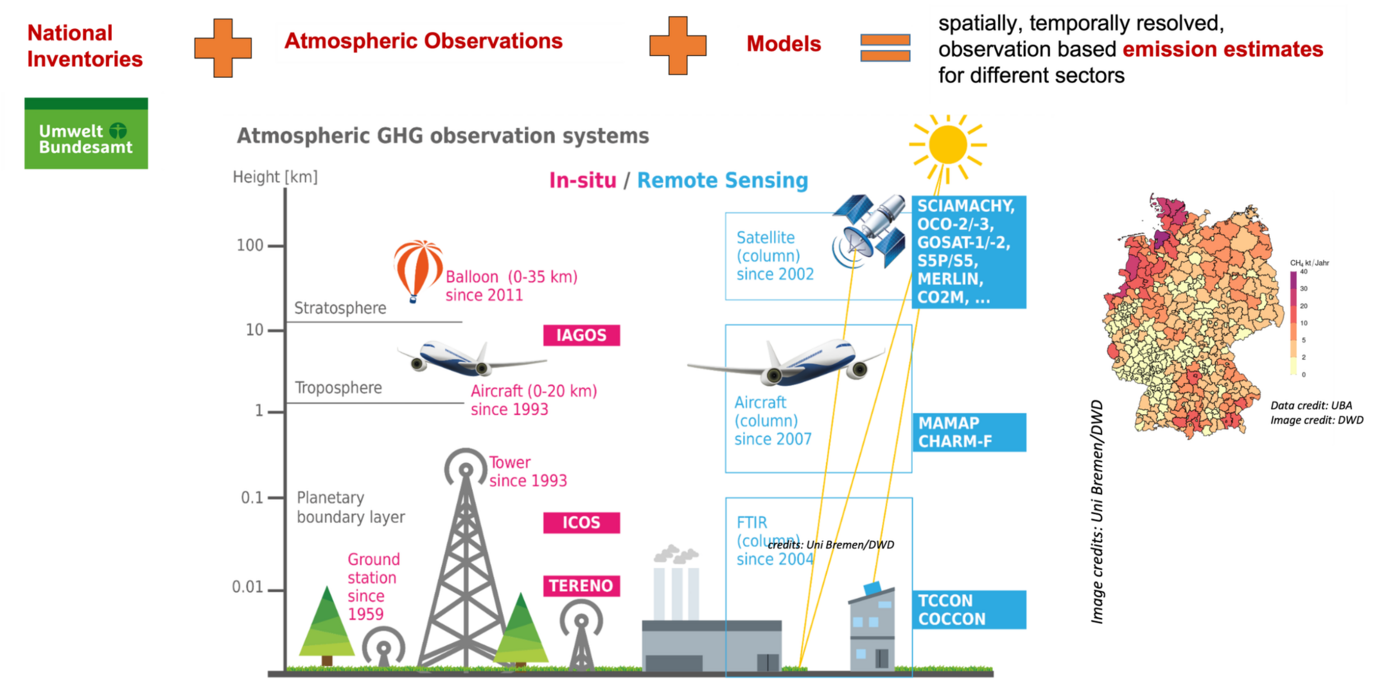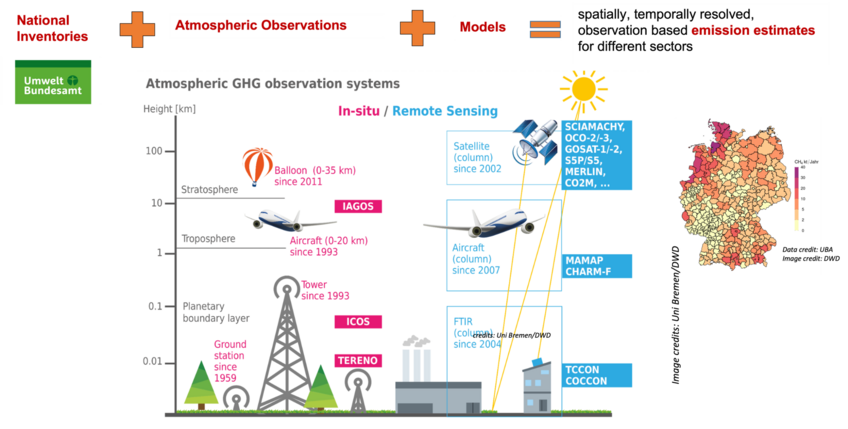
The Concept of ITMS
The vision of ITMS is to develop and implement a system capable of monitoring and documenting GHG sources and sinks by the combination of atmospheric observations from ground, air, and from space, high spatiotemporal resolution bottom-up flux modelling, and high resolution atmospheric (inverse) modelling.
Since the first IPCC report in 1990, there has been a growing recognition of the need to measure, monitor, and report the emissions of GHG, as a prerequisite for managing and mitigating man-made global warming. There is now the need to measure national contributions of GHG emissions and this has been recently committed by the COP27 under the Paris Agreement. Despite research efforts on observational data, modelling, and data assimilation to better quantify GHG fluxes, there are currently no sector-specific temporally and spatially explicit coherent data sets on sources and sinks of GHGs available for Germany.
The ITMS project aims on the development and implementation of a system capable of combining and using atmospheric observations from ground, air, and from space, high spatiotemporal resolution bottom-up flux modelling, and high resolution atmospheric (inverse) modelling for monitoring and documenting GHG sources and sinks. Such information will match user requirements and allow the implementation of an independent Monitoring, Reporting, and Verification (MRV) system for GHG emissions from diffuse sources like agricultural and industrial activities. Embedded within European research context like the European Copernicus activities on CO2 monitoring, in particular ICOS, Copernicus, and H2020 projects, the ITMS will in the long term deliver sector-specific high spatially and temporally resolved information on GHG sources and sinks which would be tailored to the requirements of German stakeholders (industry, policy), EU programs, and the broad scientific community.

